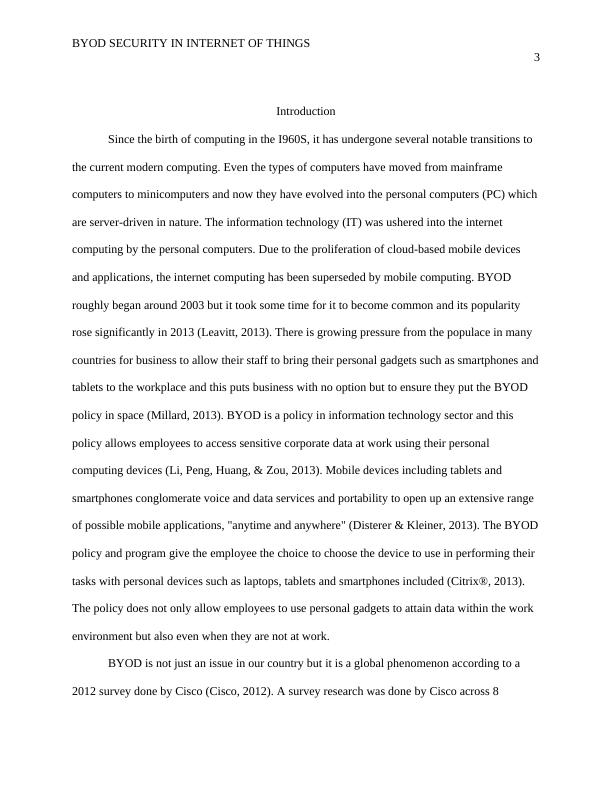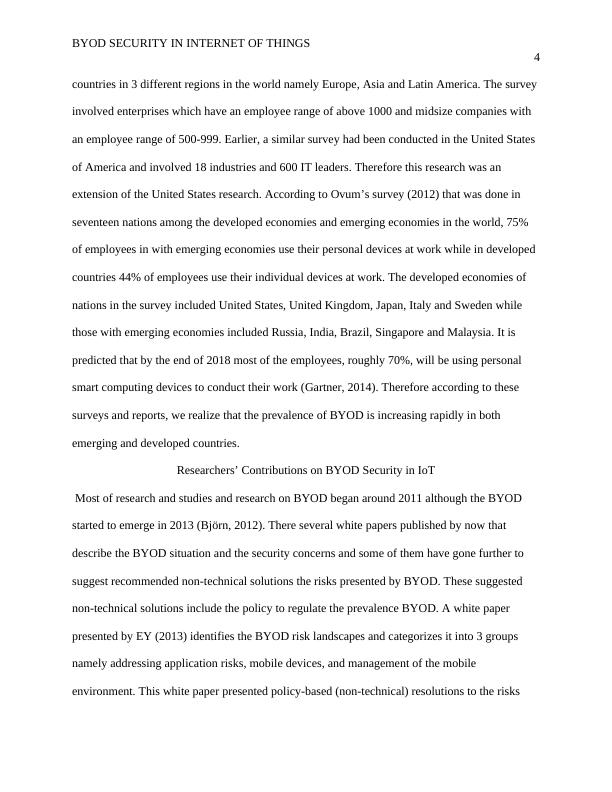BYOD Security in Internet of Things
BYOD(bring your own device) security in internet of things
17 Pages4968 Words476 Views
Added on 2023-06-11
About This Document
This research on the BYOD security on the internet of things is very important as it will outline the potential risks and challenges that organizations are exposed to by this technology trend. The research will outline important recommendations on how to deal with these challenges so as to alleviate the situation. The business sector is the major sector that can benefit from this research and enable more effective and efficient operations without facing the risks that accompany this technology.
BYOD Security in Internet of Things
BYOD(bring your own device) security in internet of things
Added on 2023-06-11
ShareRelated Documents
End of preview
Want to access all the pages? Upload your documents or become a member.
Cybersecurity: BYOD Risk Assessment, Certificate-based Authentication, Anti-phishing Guideline
|10
|2414
|209
SECURITY THREATS RELATED TO BYOD DEVICES AND COUNTERMEASURES.
|3
|432
|38
Sitemap | Network for SJGHC
|5
|732
|15
vodafone BYOD - Bring your own device
|5
|847
|602
Bring Your Own Device (BYOD)
|4
|1699
|379
Policy of Bring Your Own Device - Vodafone
|4
|914
|70




